*NURSING > DISCUSSION POST > NR 603 Week 1 Comparison and Contrast Assignment: Dementia and Delirium-Chamberlain College Of Nursi (All)
NR 603 Week 1 Comparison and Contrast Assignment: Dementia and Delirium-Chamberlain College Of Nursing(Verified answers,Graded A)
Document Content and Description Below
Compare and Contrast Dementia and Delirium Dementia is a syndrome that includes a complex cascade of diseases characterized by a myriad of signs and symptoms that affect the brain. The Diagnostic an... d Statistical Manual of Mental Disorders, 5 th Edition states that a cognitive decline from a previous level of functioning in one or more of the following areas executive functioning, complex attention, language, social cognition, learning memory, and perceptual motor in an indicator of dementia (De Clouet, 2016). Dementia is slow in progression and characterized by chronic cognitive decline, disorientation, and progressive memory loss that has more effects on short term memory but can also affect long term memory; these symptoms often progress to a severity that inhibits independence and ADLs and is not reversible (Mouzak, 2016). Alzheimer’s disease is the most common causes of dementia that manifests as changes in memory and organization; as the disease progresses symptoms become more debilitating. Other causes include vascular disease, Lewy body disease, traumatic brain injuries, infections, toxins, HIV, Prion disease, Parkinson’s disease, Huntington’s disease, and Frontotemporal lobar degeneration (De Clouet, 2016). Because many other conditions can mask these symptoms early on it is often difficult to make the diagnosis early. Risk factors include age, family history, genetics, and history of cardiovascular events or stroke. Obtaining an accurate medical history from the patient and caregiver is key to diagnosing dementia. Cognitive and functional concerns, mental and behavioral changes should be addressed. Any patient presenting with forgetfulness, with impaired memory and/or judgment, changes in LOC, confusion and disorientation, hallucinations, poor social skills, and paranoia should be evaluated for dementia in the absence of other causes (Lippmann & Perugula, 2016). CBC, CMP, TSH w/reflex to Free T4, UA, Lipid Panel, Glucose, EKG, and medication review should all be collected to rule out infection, endocrine disorders, electrolyte imbalances, and cardiac diseases (Pink et al., 2018). The head to toe exam is useful in identifying comorbid conditions that may contribute to cognitive dysfunction such as thyroid disorders, hypotension, and COPD. Finally, the cognitive exam is useful in determining severity of symptoms. According to NICE guidelines, a brief screening tool should be used for cognitive testing, such as the 10-point cognitive screener (10-CS) or the 6-item cognitive impairment test (6CIT), compared to longer tests such as the MOCA or MMSE (Pink et al., 2018). The MMSE (Mini-Mental Status Exam) does measure cognition but is limited in measuring executive functions and memory impairment (De Clouet, 2016). A minimum of 2 or more abnormal findings in cognition and behavior is considered a positive diagnosis for dementia. Cognitive or behavioral impairment can include inability to remember new information, repetitive questions, misplacing belongings, forgetting important appointments or events, wandering or getting lost on familiar routes. Patients may exhibit poor judgement, poor understanding of safety risks, and loss of ability to manage finances. Normal faces or objects may be unrecognizable by patient. Alterations in language functions including difficulty with common words, speech difficulties, spelling and writing can also be affected as well as personality and behavior changes (Mouzak, 2016). The “VITAMINS” mnemonic is useful in evaluating rapidly progressing dementias. Some of these rapidly progressive manifestations concern vascular, infectious, toxic-metabolic, autoimmune, metastatic-neoplastic, iatrogenic, neurodegenerative or systemic diseases (Mouzak, 2016). Treatment is disease-specific and is aimed at correcting underlying issues. Cognitive stimulation therapy is recommended in mild to moderate dementia to help improve cognitive and social functioning. Offer activities that interest the patient and promote wellbeing, such as small group reminiscence This study source was downloaded by 100000831988016 from CourseHero.com on 04-18-2022 07:17:03 GMT -05:00 https://www.coursehero.com/file/34131751/NR-603-Week1TD1docx/ therapy. Occupational therapy can also help with functional ability. Memory-enhancing drugs should be considered depending on type of dementia identified. Cholinesterase inhibitors or memantine are used to manage symptoms when appropriate (Pink et al., 2018). Delirium is a serious health problem that requires immediate intervention especially in older adults. This is often the first sign of illness such as infection, MI, and drug toxicity in older adults. Delirium is usually rapid in onset and characterized by disorganized thinking, speech, and changes in orientation. These symptoms are usually reversible and brief but can be prolonged. Visual or tactile hallucinations may also be present depending on underlying cause. History and physical exam, lab testing to rule in/out metabolic disorders, electrolyte imbalances, ETOH intoxication, hypoglycemia, fever, infection, toxins (medicinal or illicit), herbal medications, brain lesions, tumors, neoplasms, trauma, urinary retention/infection, sleep disturbances, post op states, cardiac abnormalities, and postictal states are all causes of delirium especially in the older population. Treatment is aimed at correcting underlying issues. If medication is the cause it should be stopped. Anticholinergics have a high risk of causing delirium in older adults. Symptomatic management of behavioral issues with medications is indicated to reduce self-harm and facilitate treatment. One of the most difficult aspects of identifying and understanding dementia and delirium is that they both present with overlapping symptoms making the process of diagnosis a confusing challenge (Mendes, 2017). These symptoms include forgetfulness, impaired memory and/or judgment, confusion and disorientation, and paranoia. In 2011 the National Institute on Aging- Alzheimer’s Association (NIAAA), presented new criteria for all cause dementia with definite diagnosis being made only post-mortem (Mouzak, 2016). Dementia is diagnosed when there are cognitive or behavioral symptoms that interfere with the ability to function in usual daily activities, there is a decline from previous baseline levels of functioning and performing that is not explained by delirium or major psychiatric disorder. Due to the complex nature of diagnosis there is no one screening tool for dementia. Cognitive impairment including changes in memory, perception, judgement, and reasoning are key in diagnosing this disease (Mendes, 2017). Impairment is diagnosed through a combination of history and physical exam, objective cognitive assessment, either a “bedside” mental status exam or neuropsychological testing. Neuropsychological testing should be performed when a definitive diagnosis cannot be made based on history and mental status exam (Mouzak, 2016). Delirium is transient, usually acute, and due to a reversible impairment of cerebral oxidative metabolism and/or various neurotransmitter abnormalities, while in dementia, impaired brain function results from an external cause or an internal process affecting cerebral neurochemistry and/or anatomic damage to the brain and deeper structures. Delirium is associated with profound confusion that manifests clinically with a wide range of neuropsychiatric changes. It can occur at any age but is more common in elderly people with somatic illnesses or those who have compromised mental statuses (Lippmann & Perugula, 2016). Reference This study source was downloaded by 100000831988016 from CourseHero.com on 04-18-2022 07:17:03 GMT -05:00 https://www.coursehero.com/file/34131751/NR-603-Week1TD1docx/ De Clouet, M. (2016). Chapter 11: Neurological Disorders. In Clinical Guidelines In Primary Care(2nd ed., pp. 447-449). Scott, LA: APEA. Lippmann, S., & Perugula, M. L. (2016). Delirium or Dementia? Innovations in Clinical Neuroscience, 13(9- 10), 56–57. Mendes, A. (2017). Recognizing and assessing care need [Show More]
Last updated: 1 year ago
Preview 1 out of 3 pages

Reviews( 0 )
Document information
Connected school, study & course
About the document
Uploaded On
Apr 18, 2022
Number of pages
3
Written in
Additional information
This document has been written for:
Uploaded
Apr 18, 2022
Downloads
0
Views
67

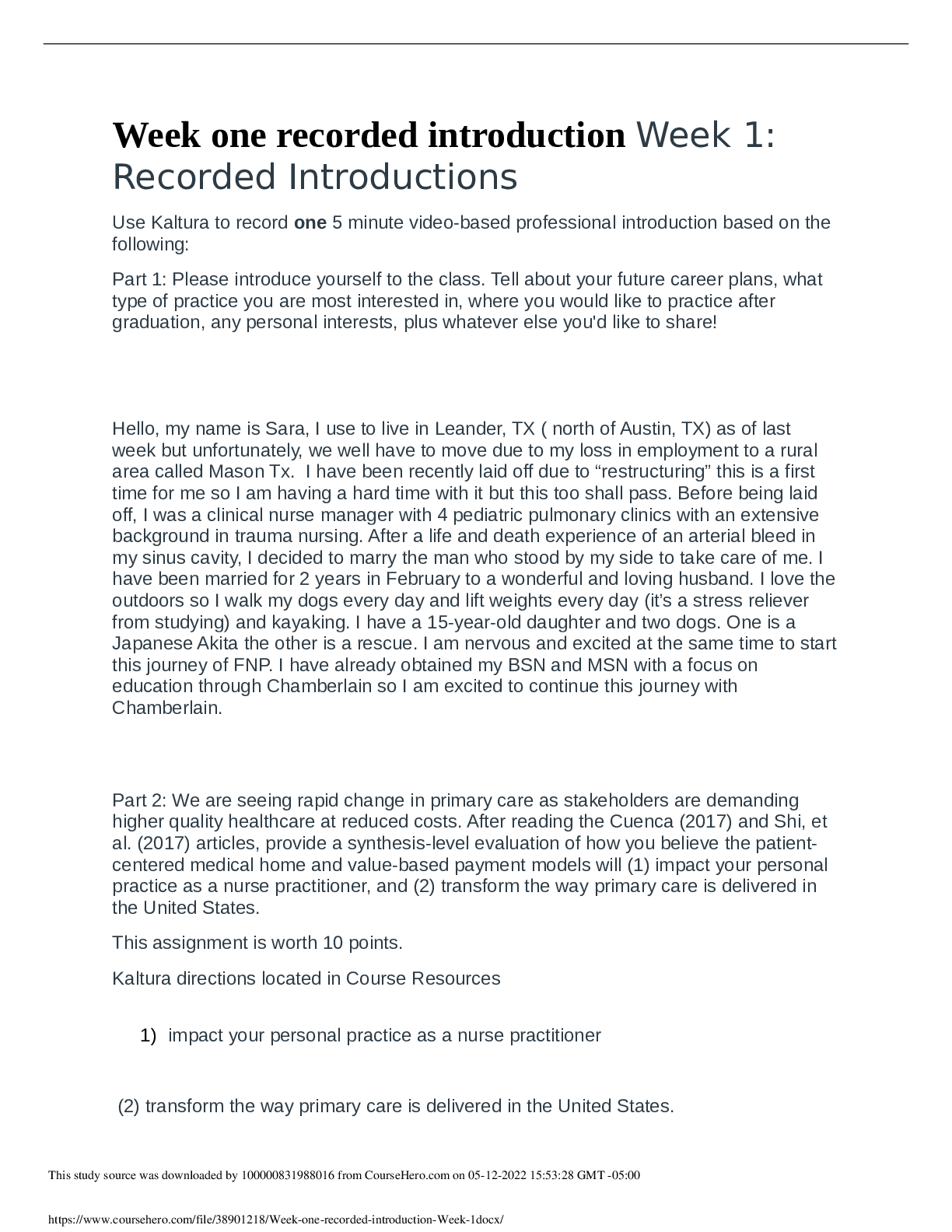


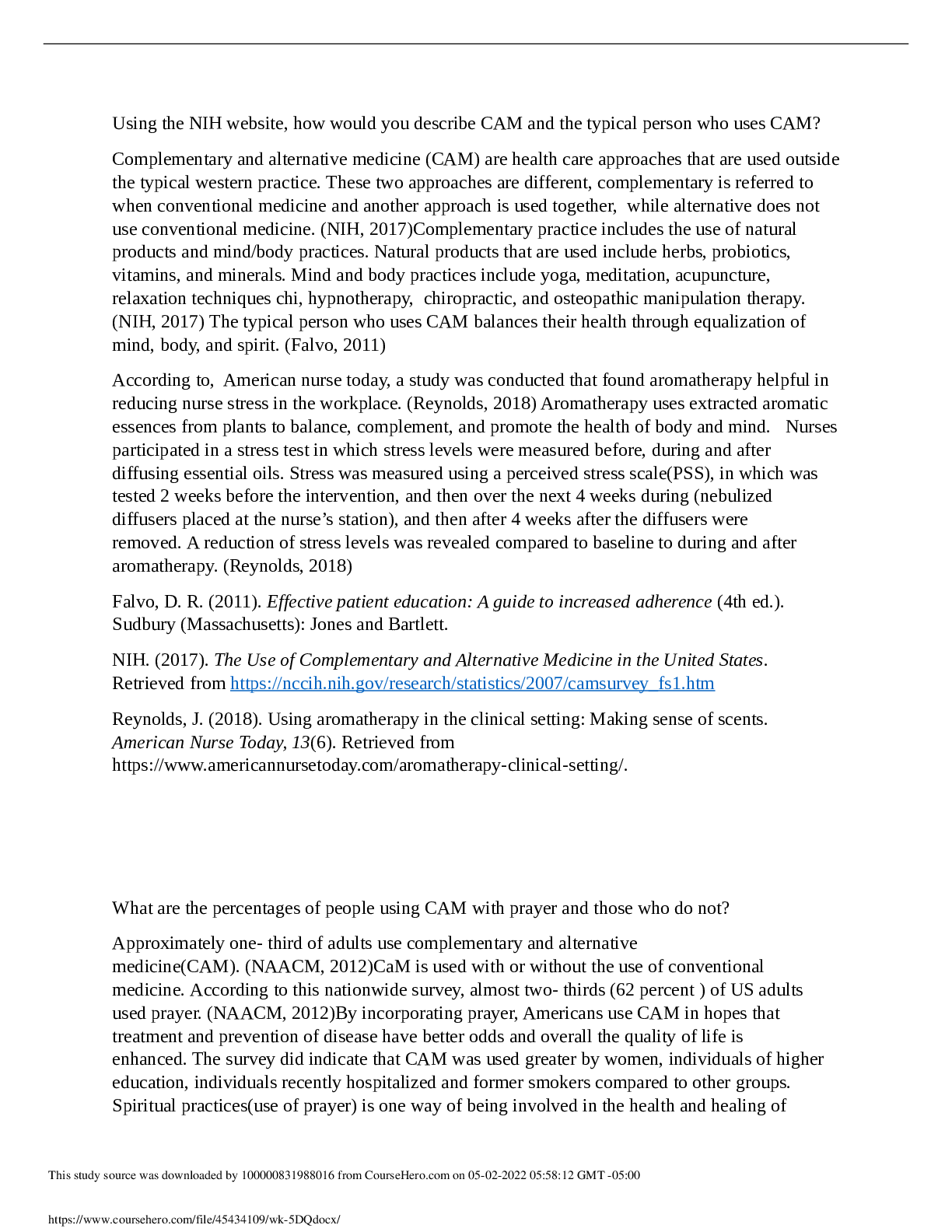


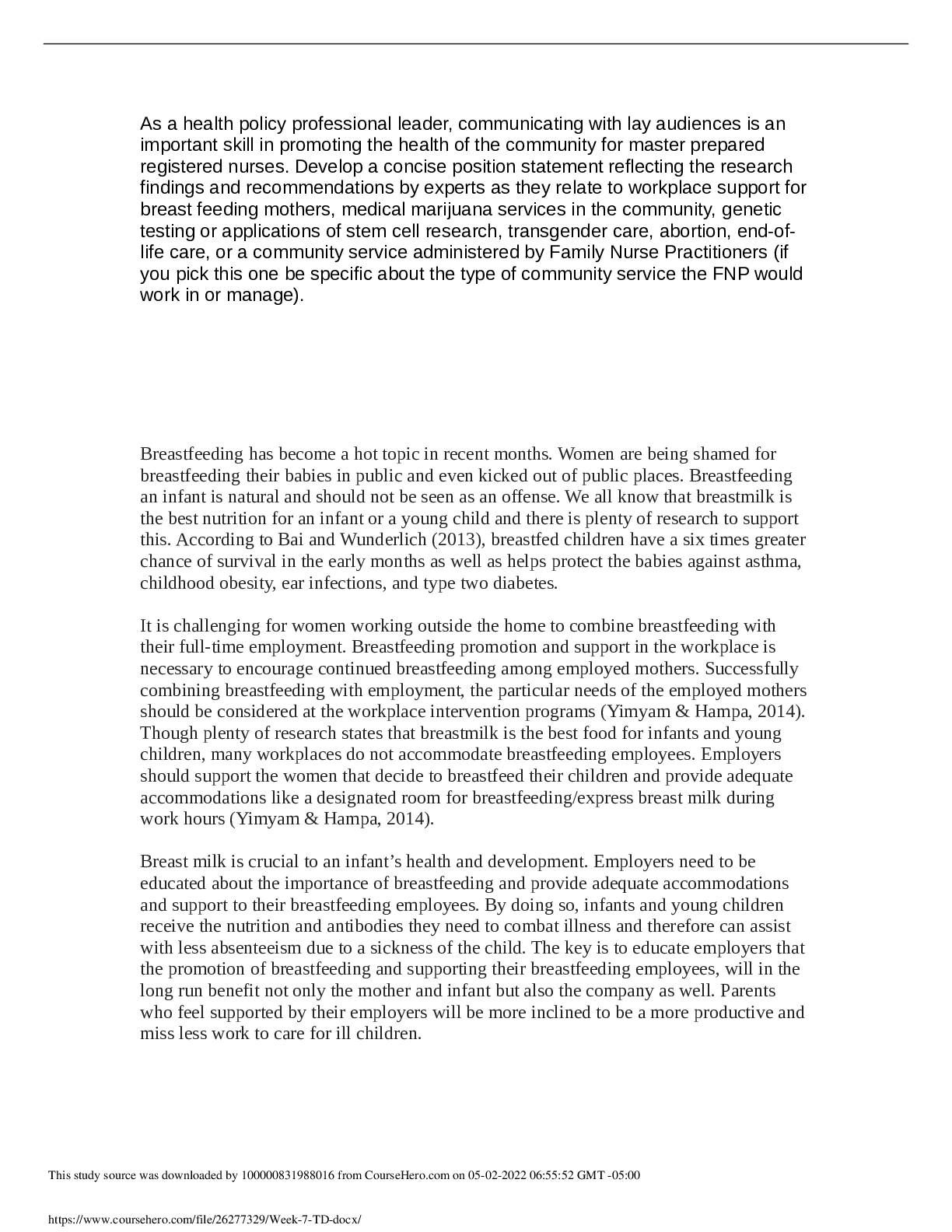
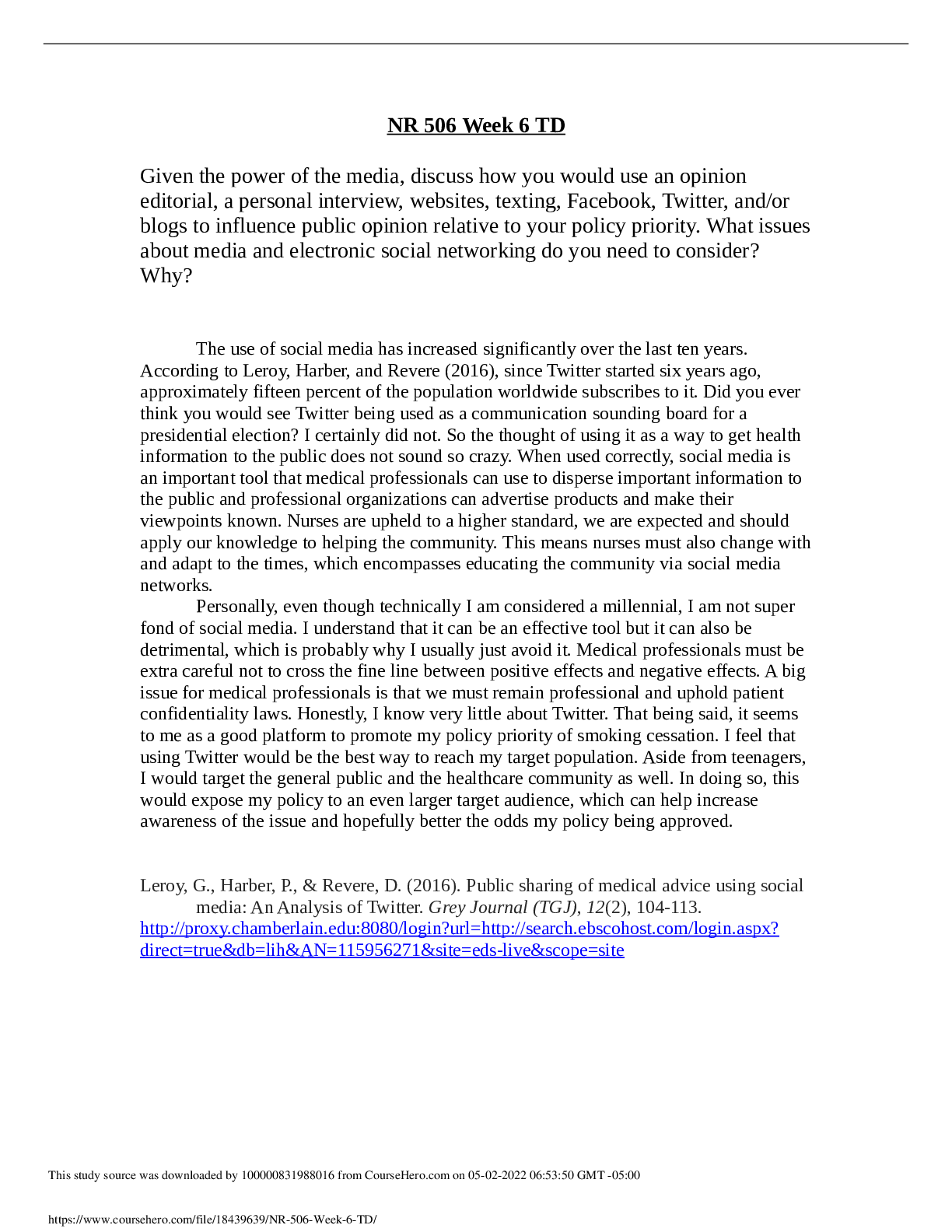
.png)
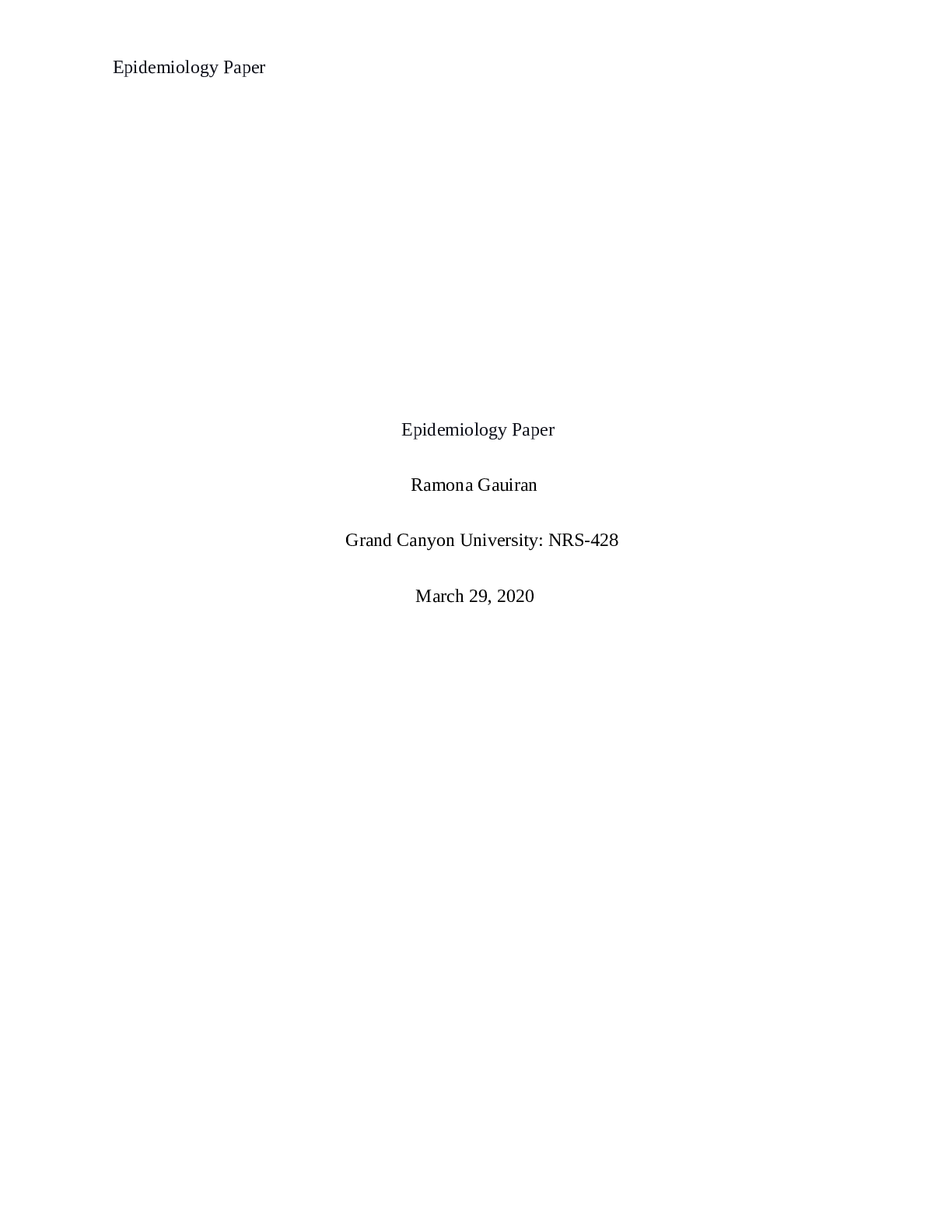
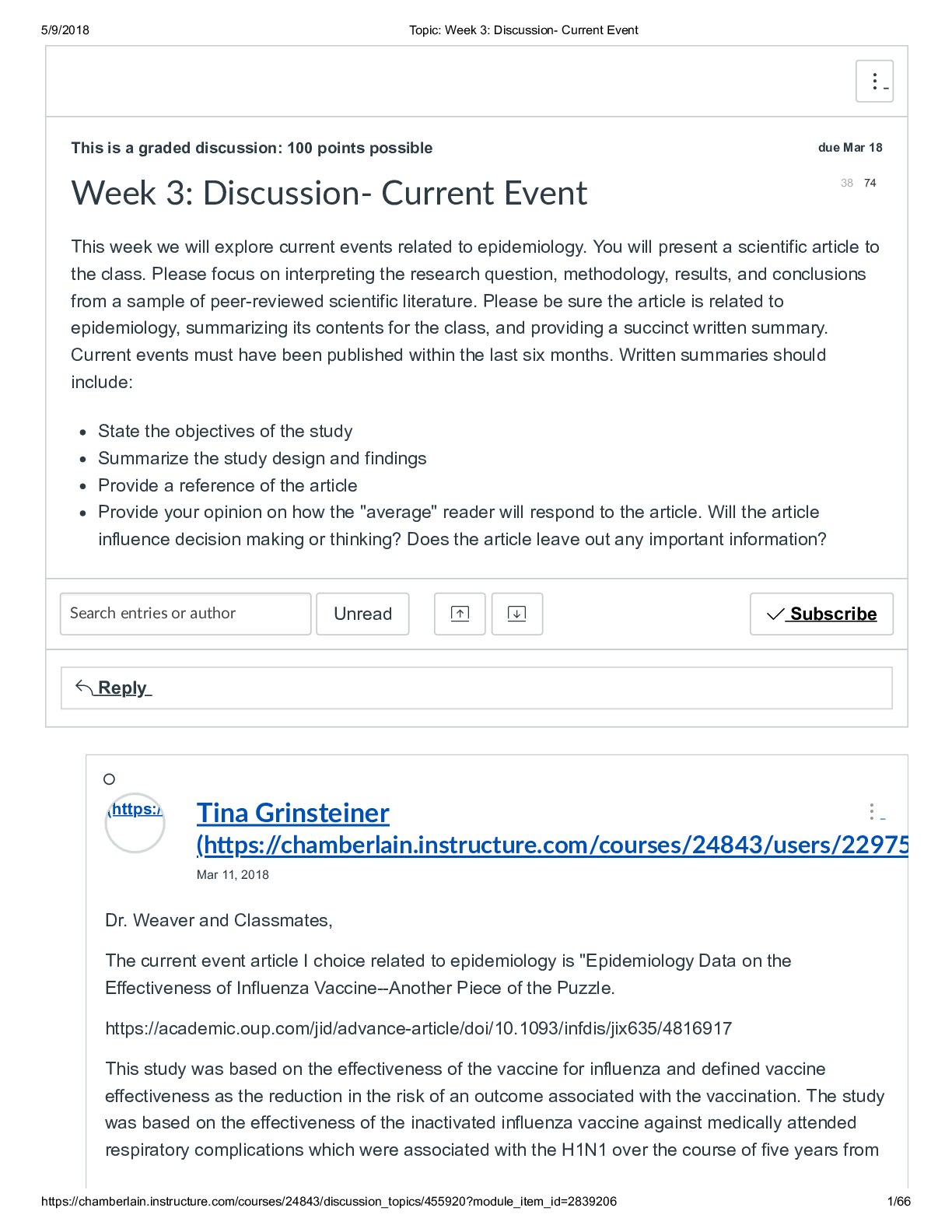

.png)

.png)
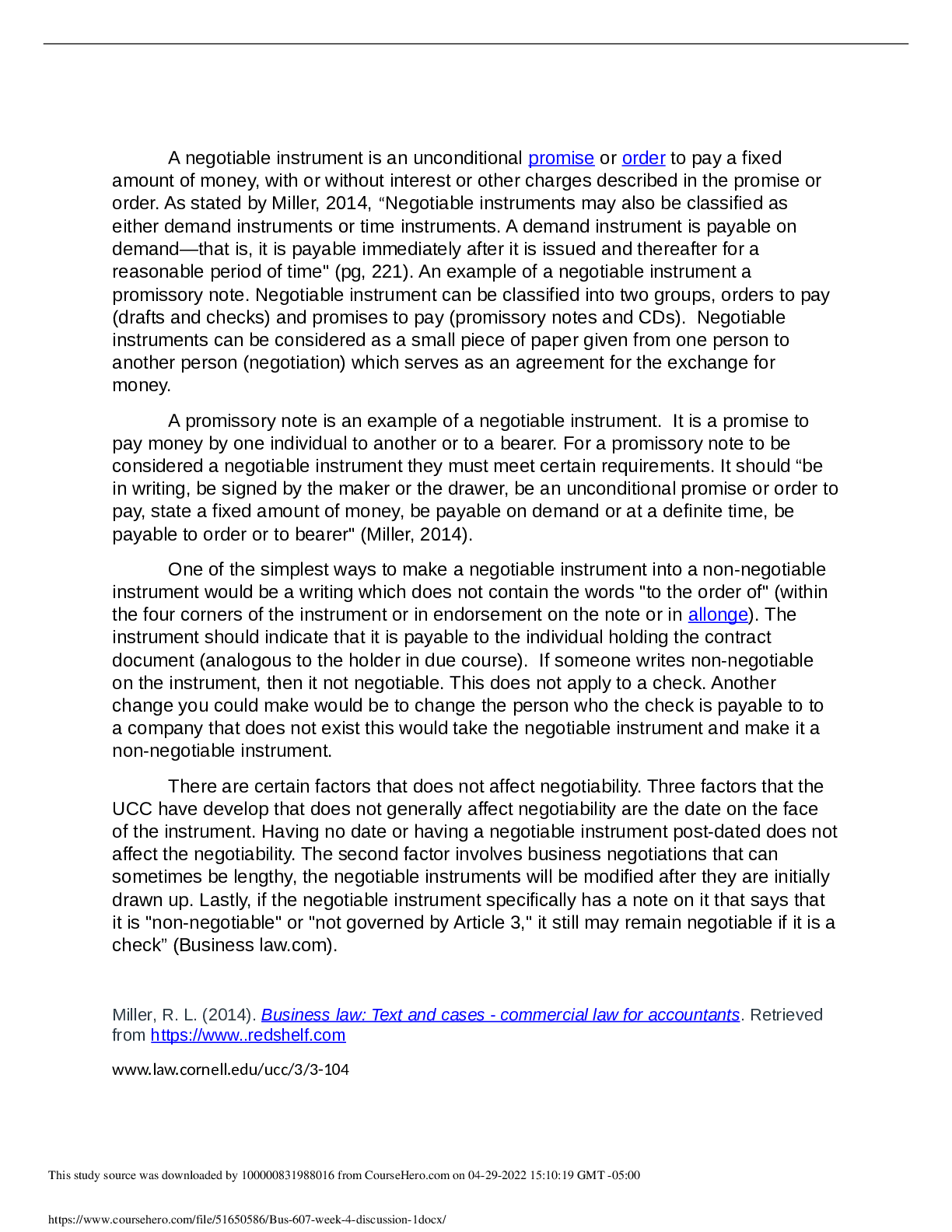
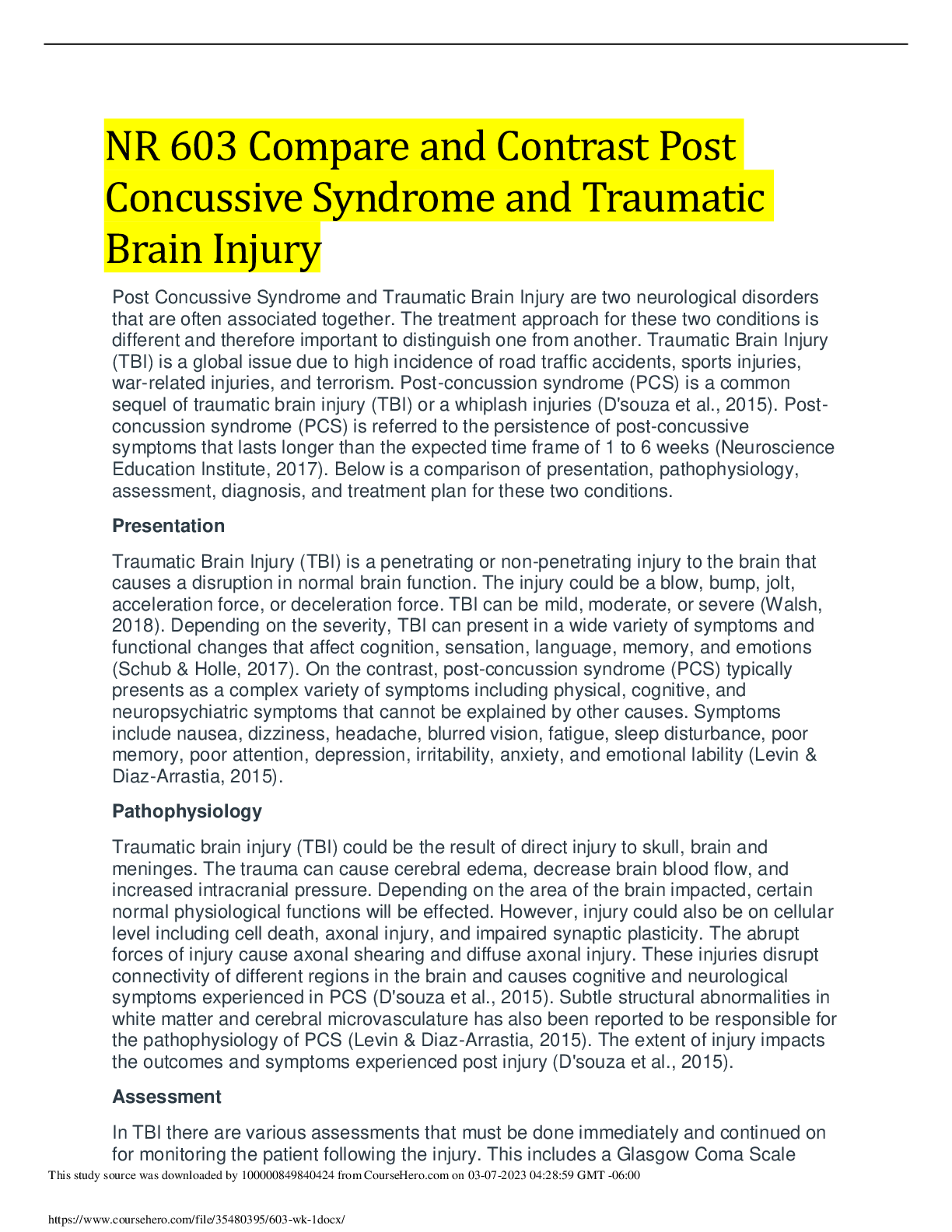
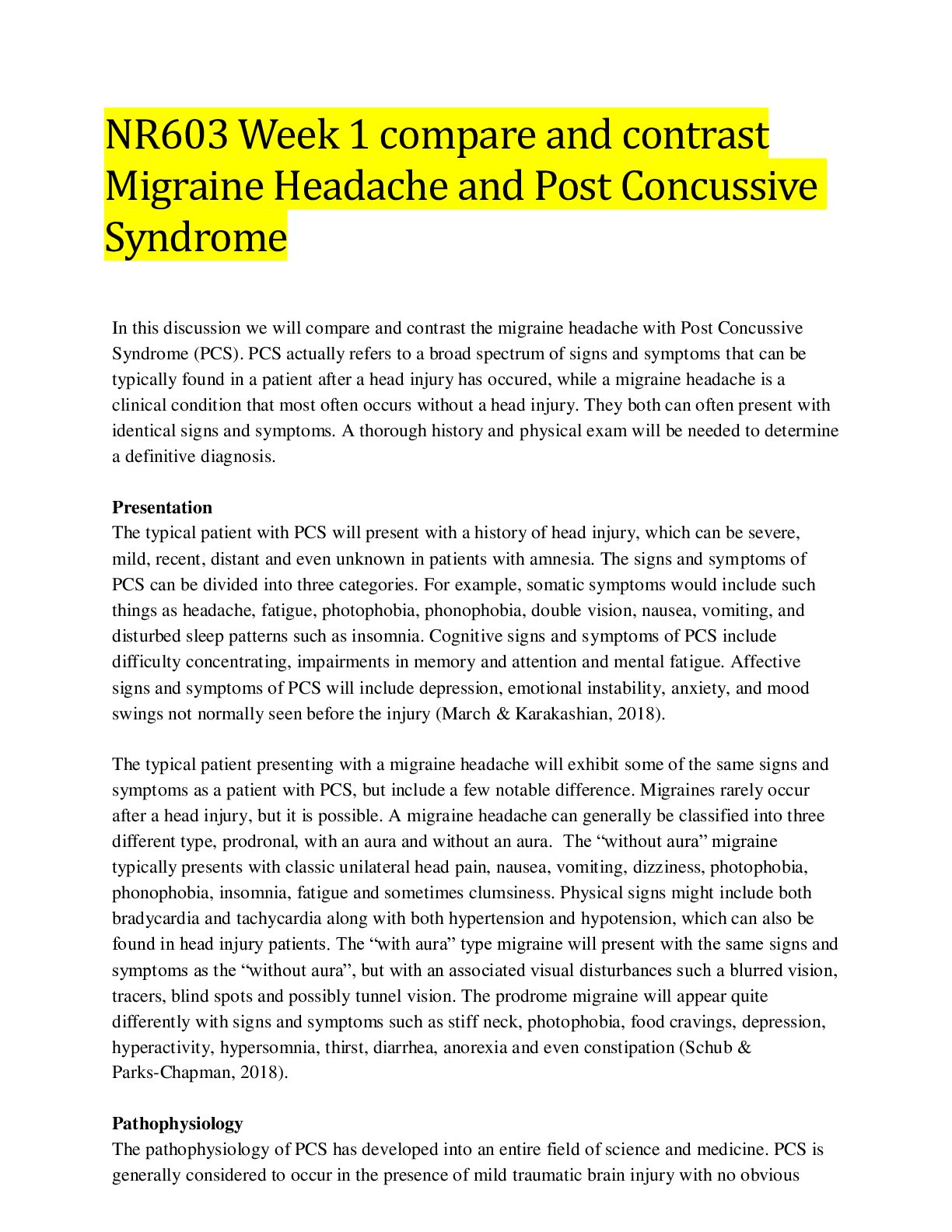
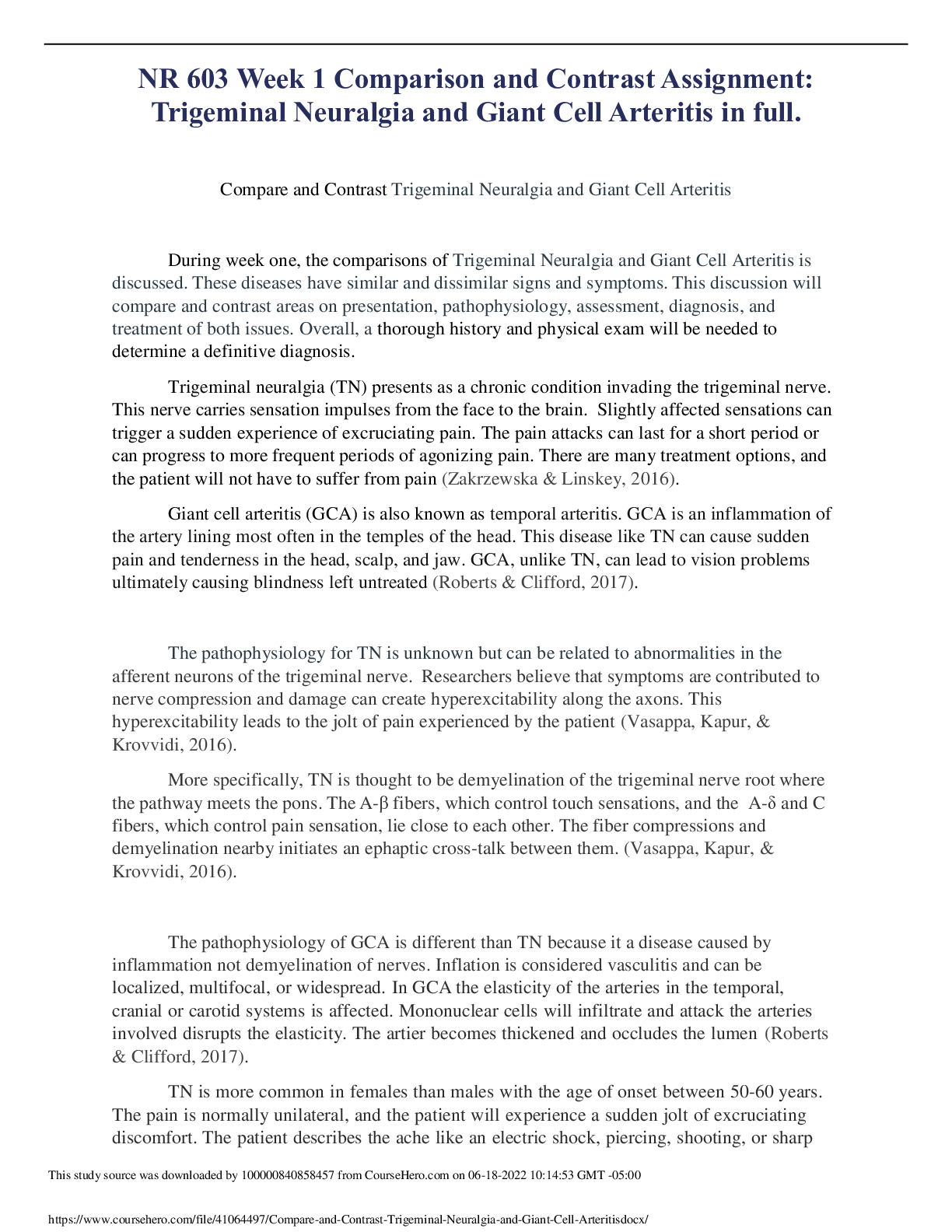

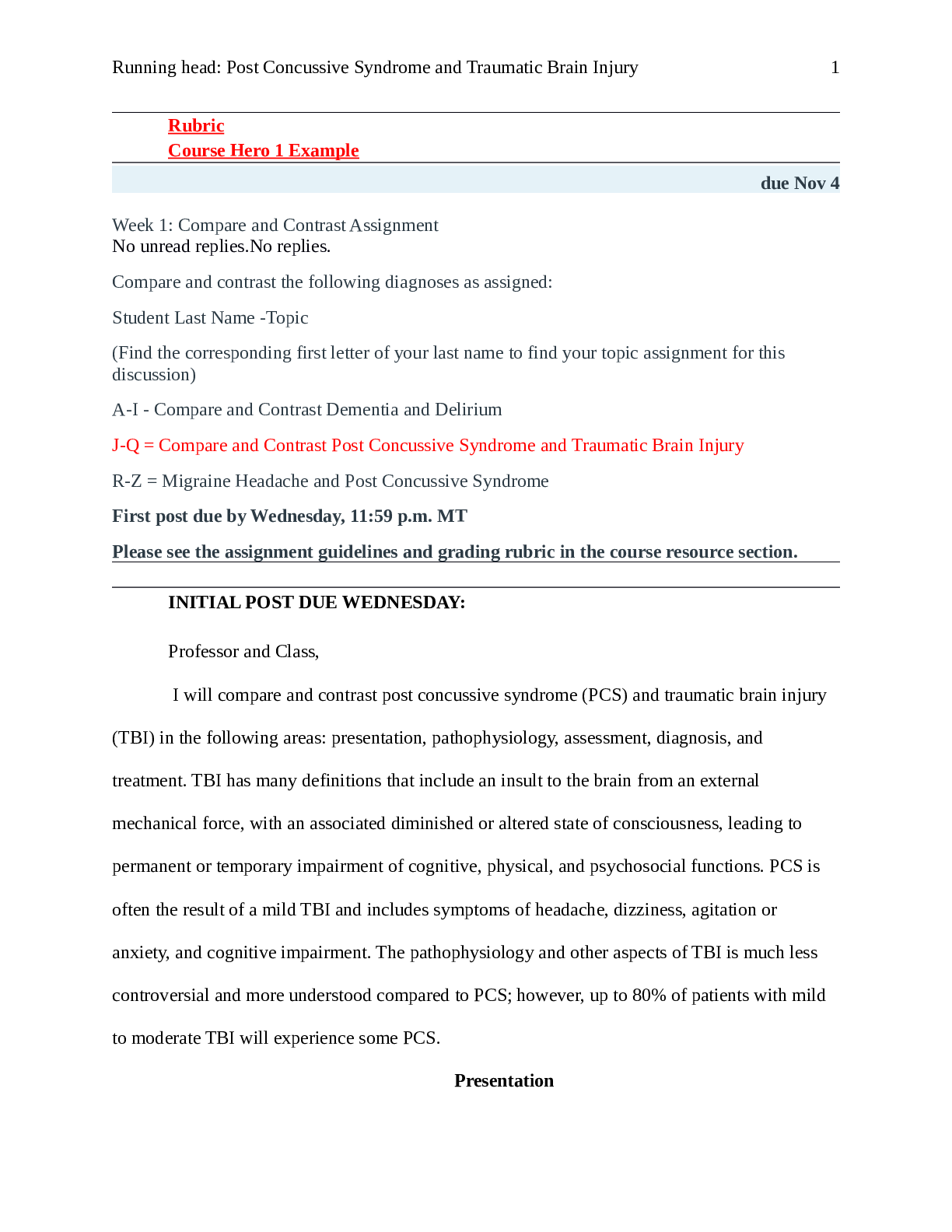
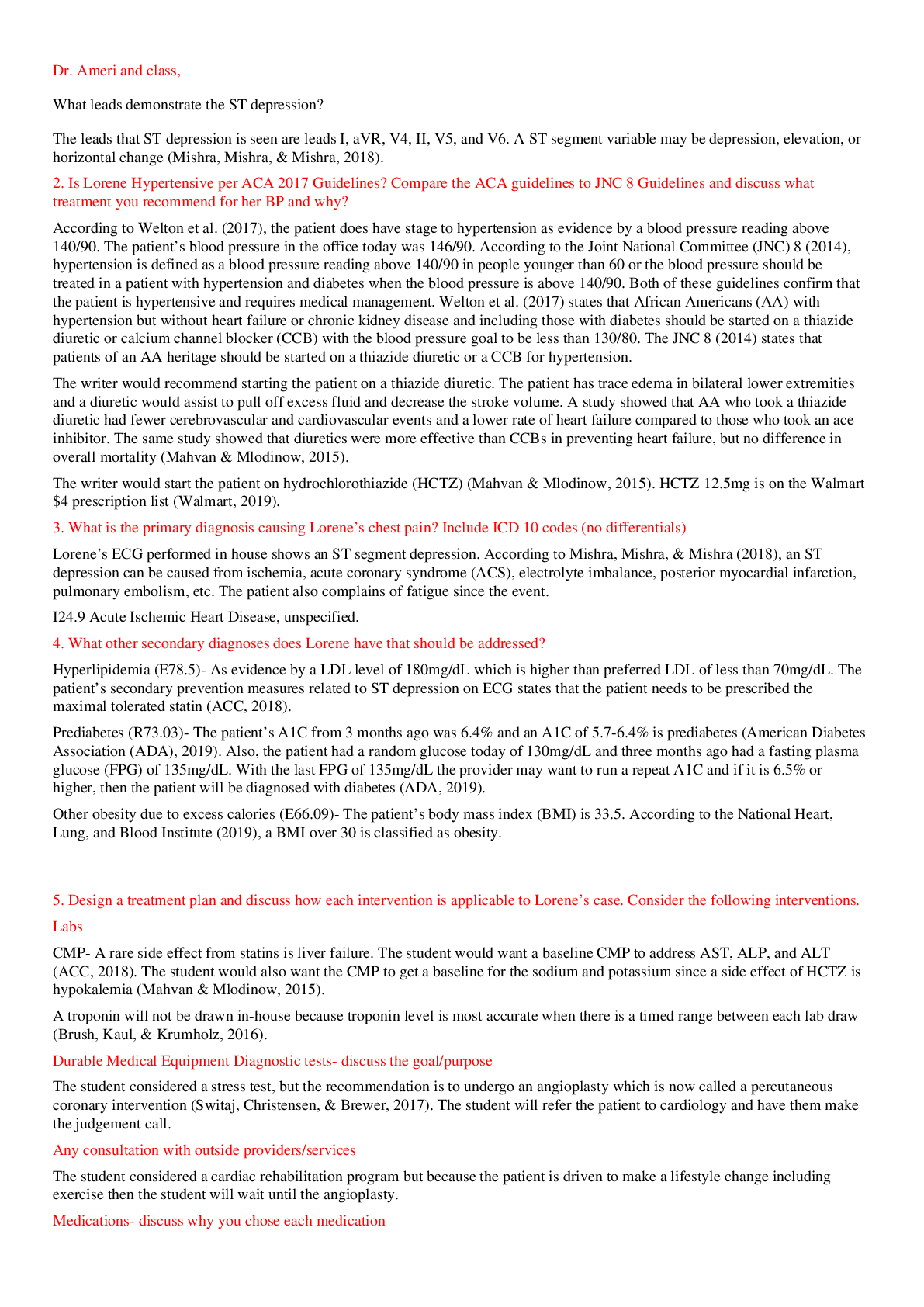

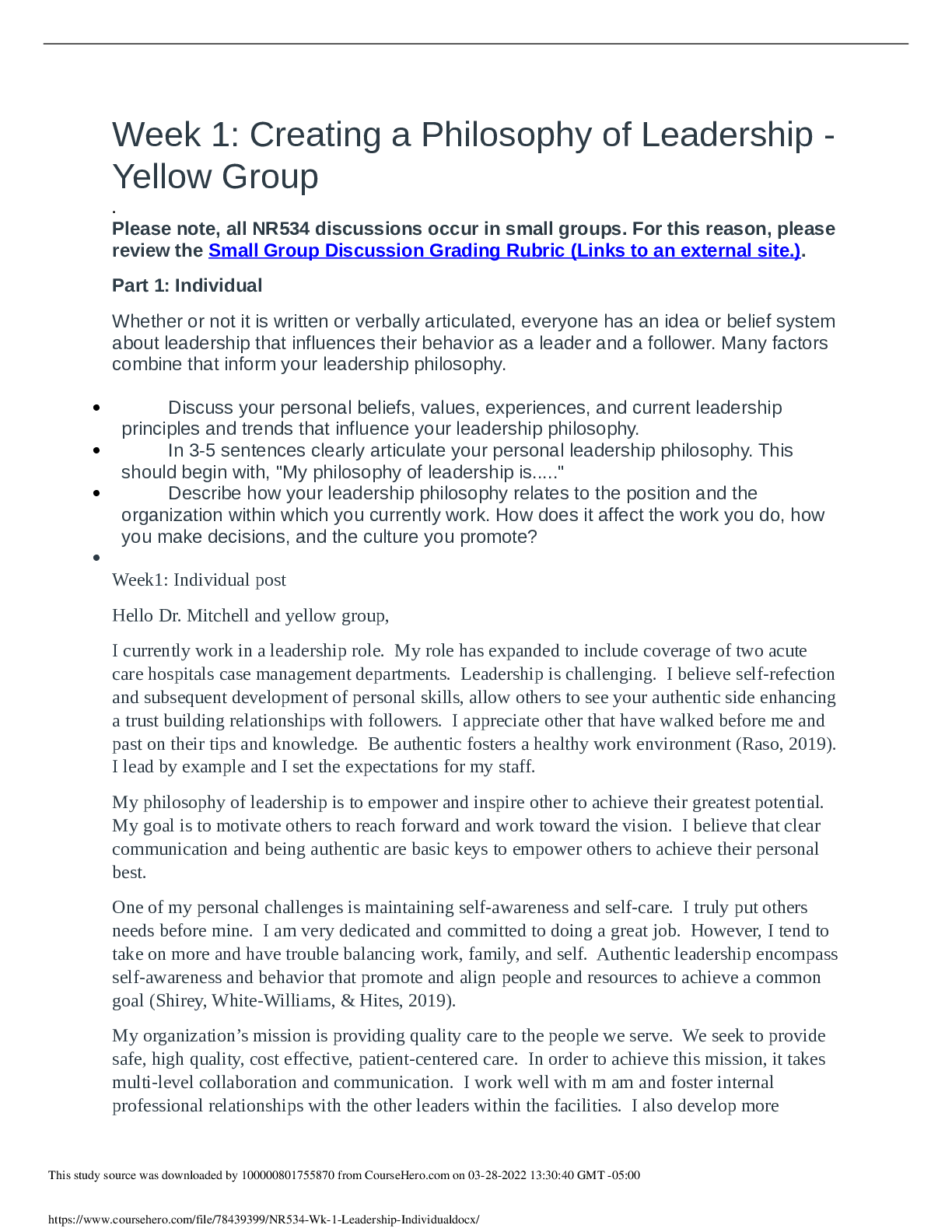
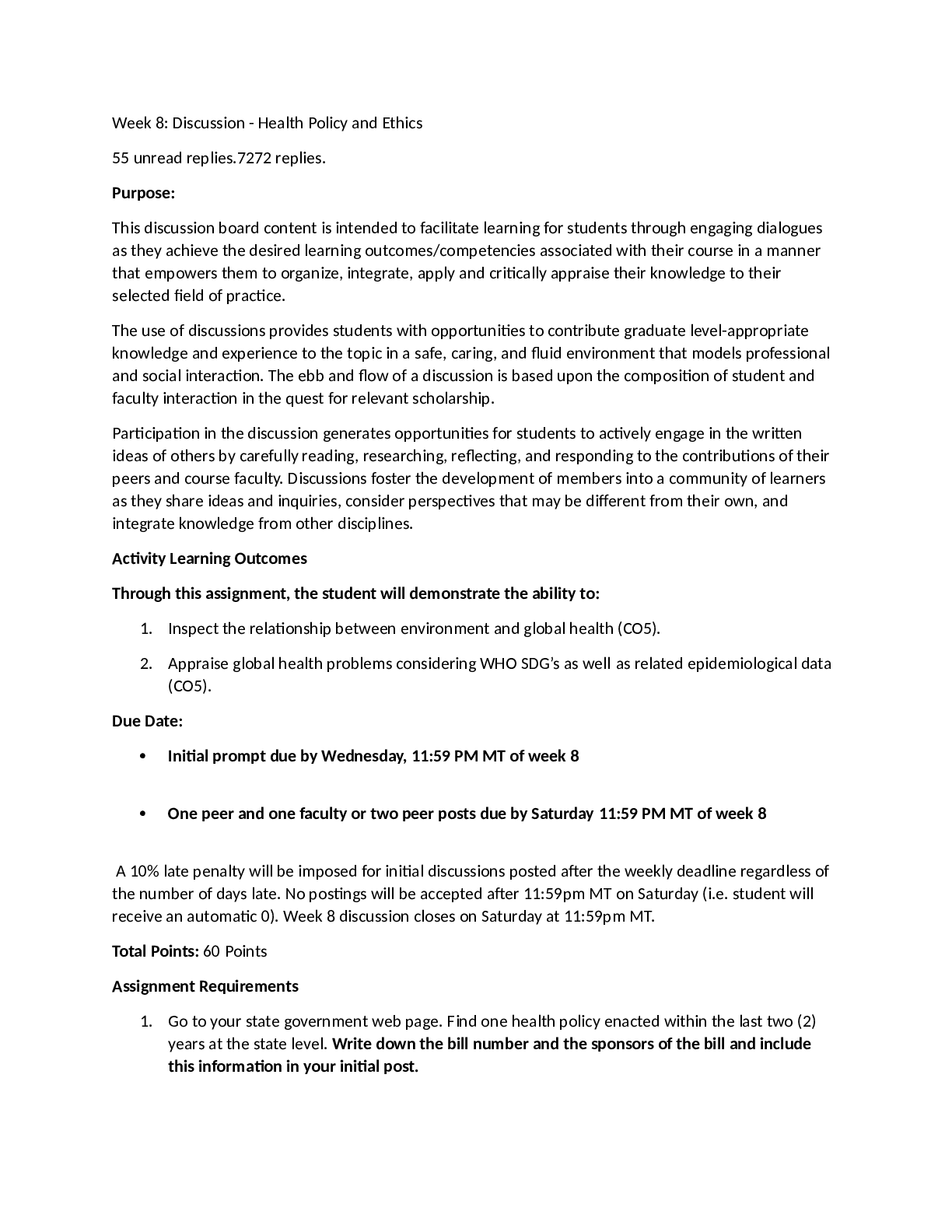
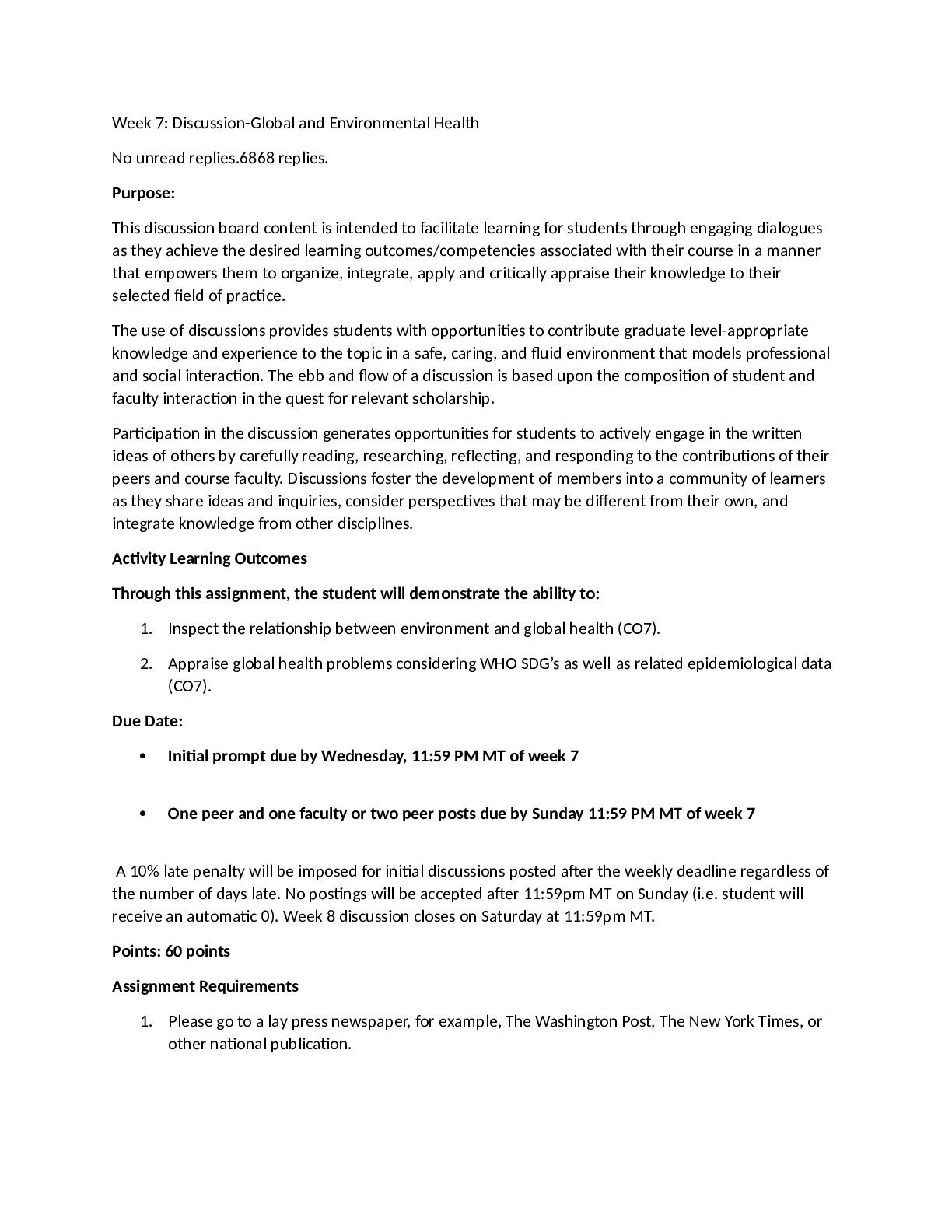

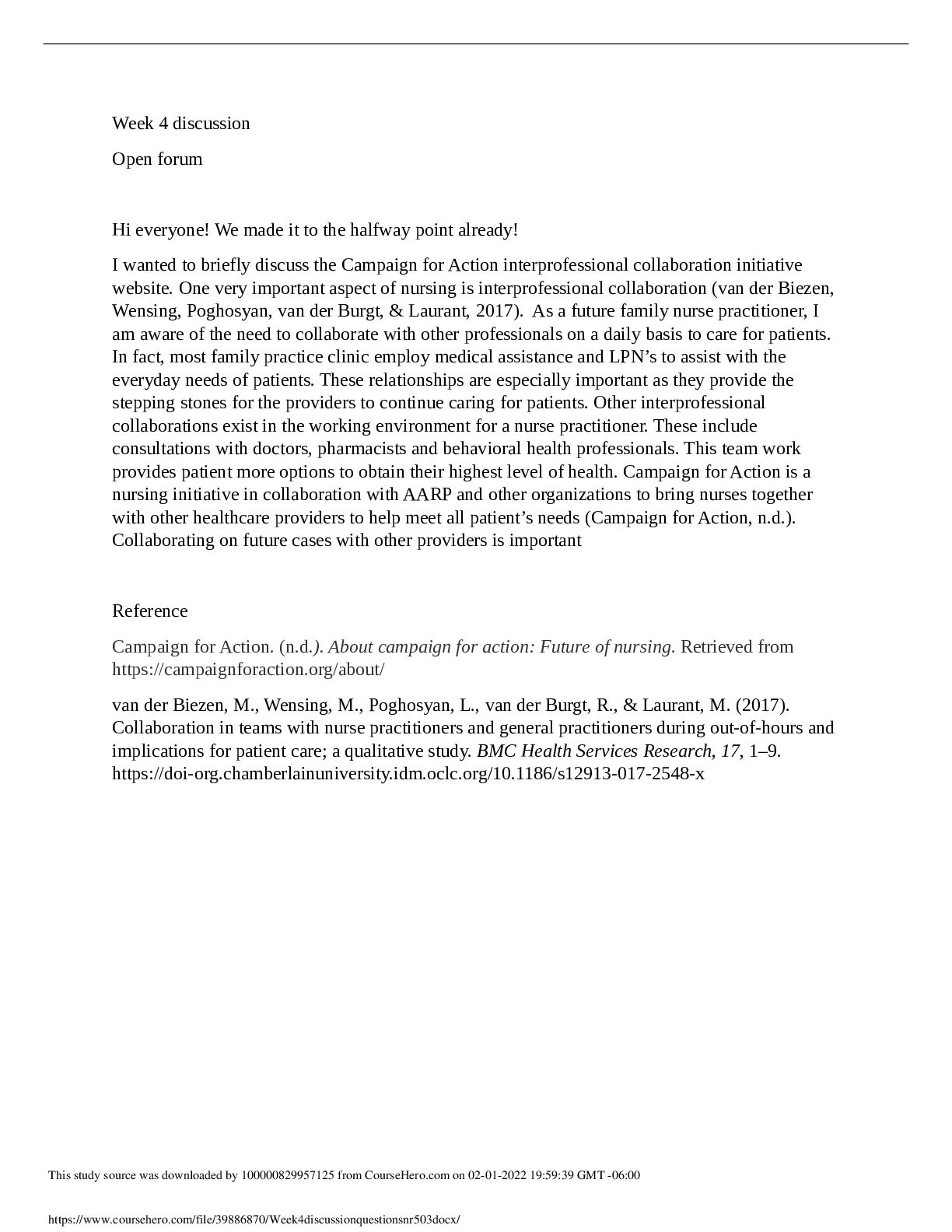

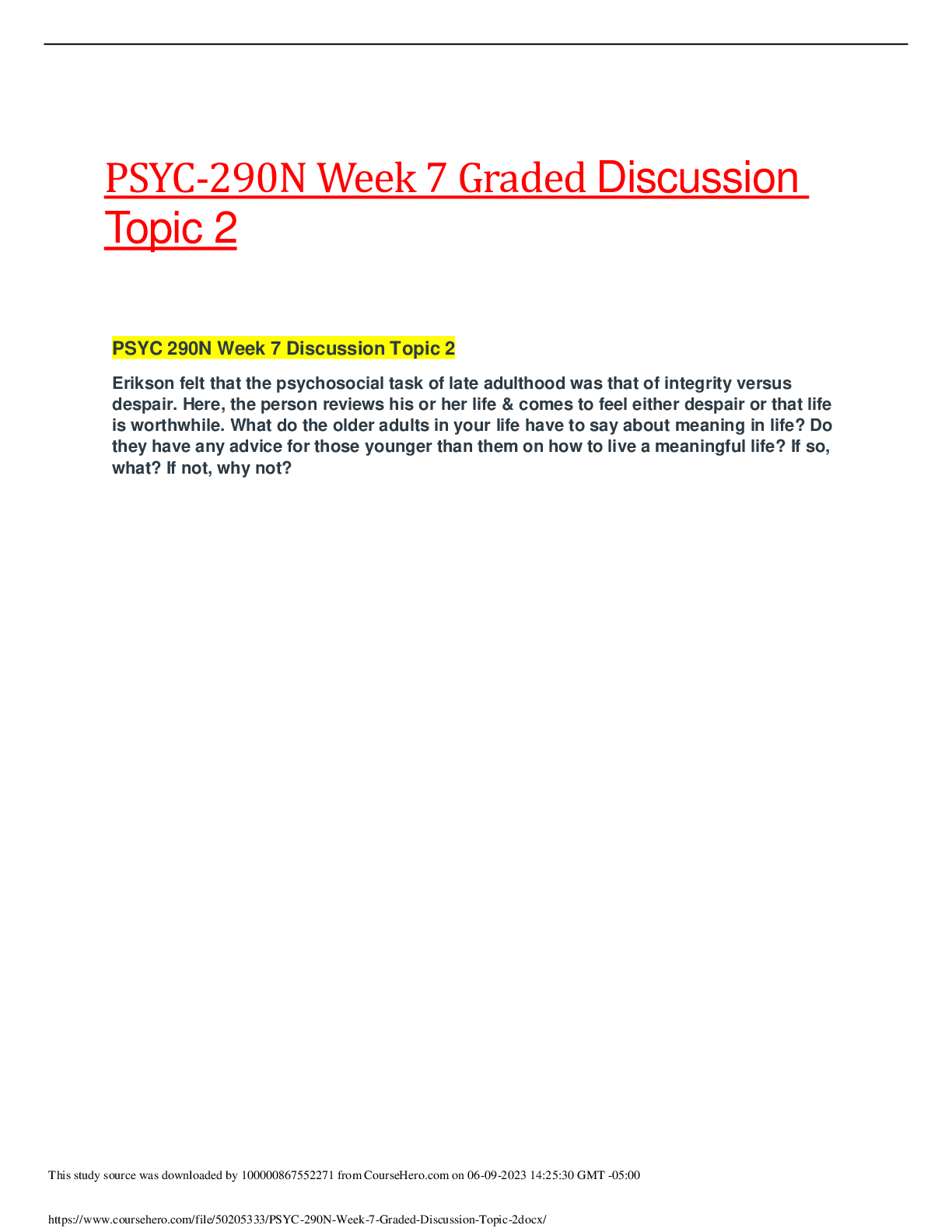
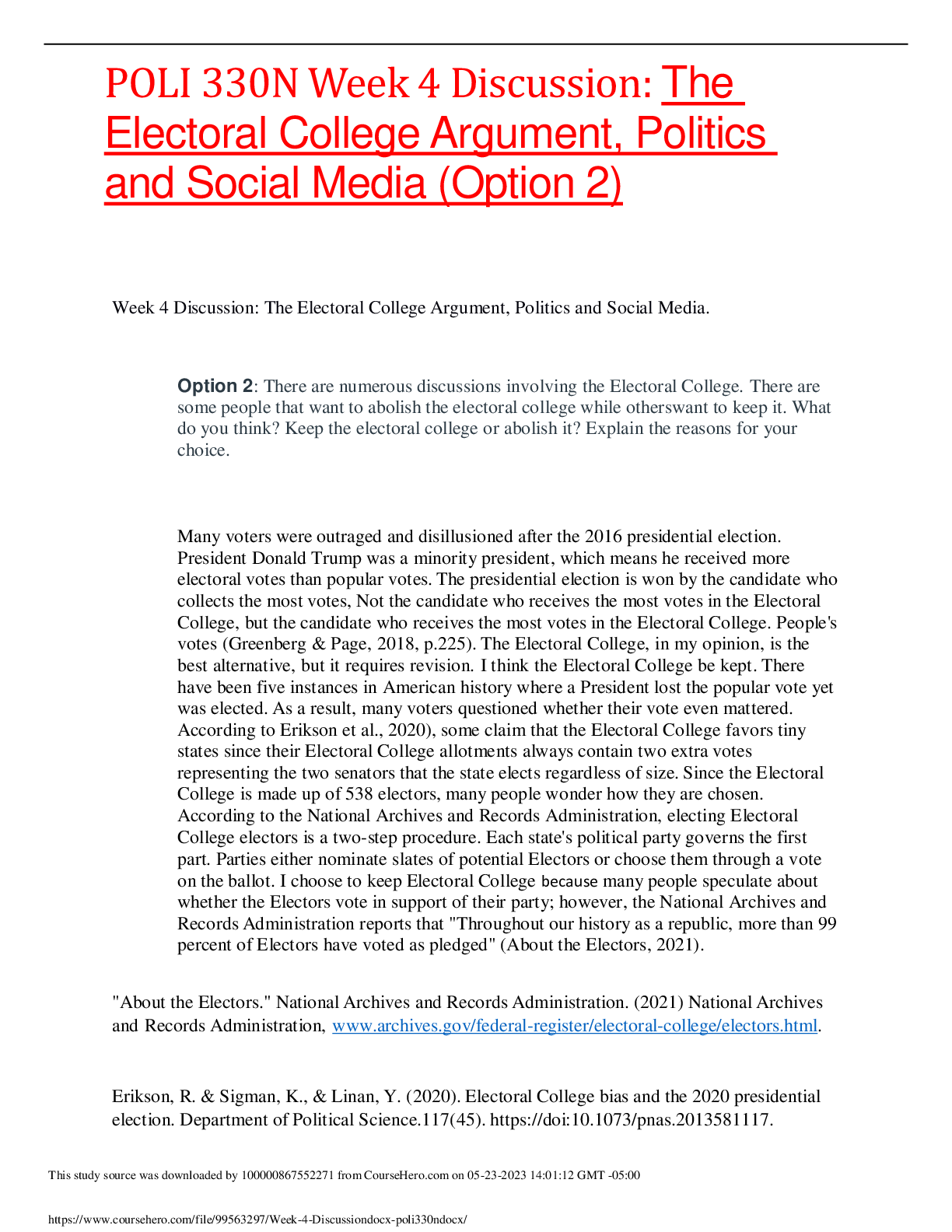

Growth and developmental patterns of toddlers.png)

